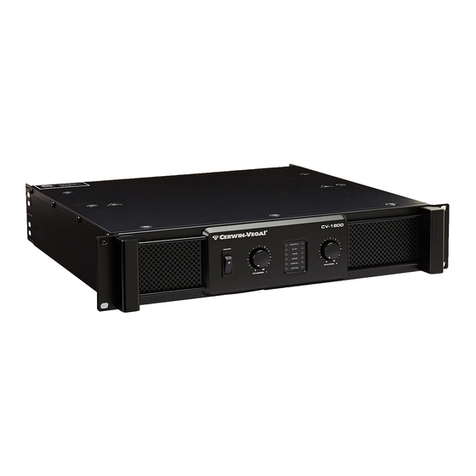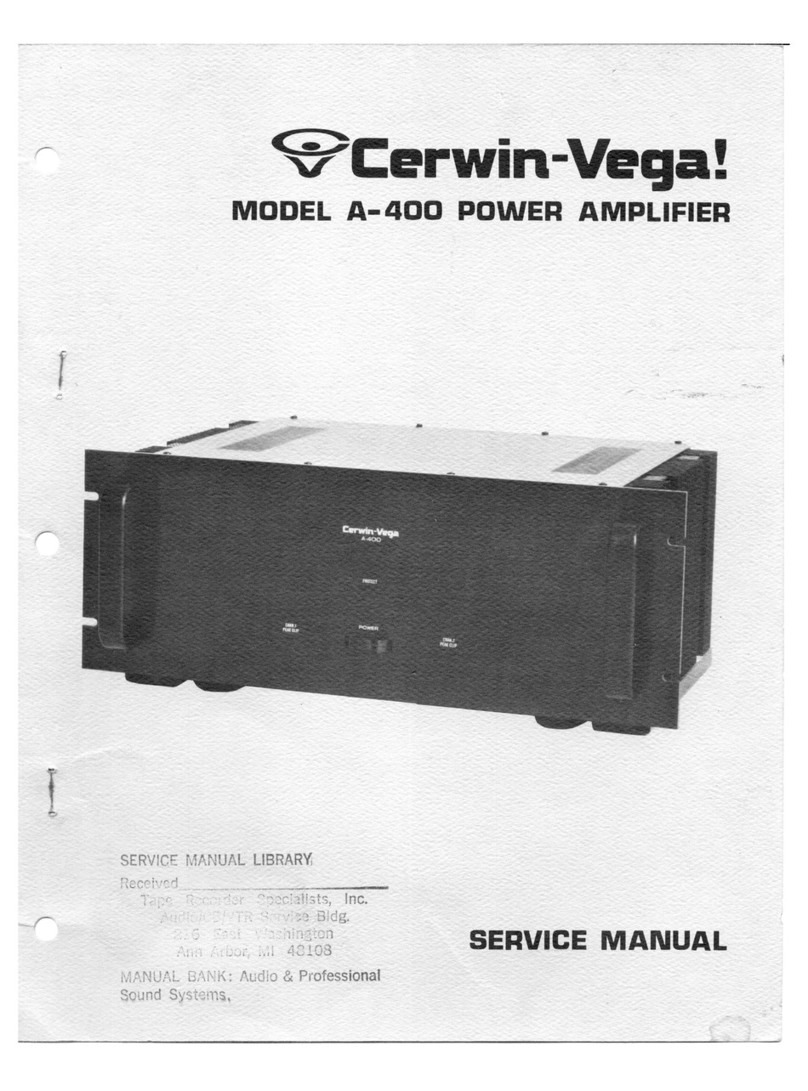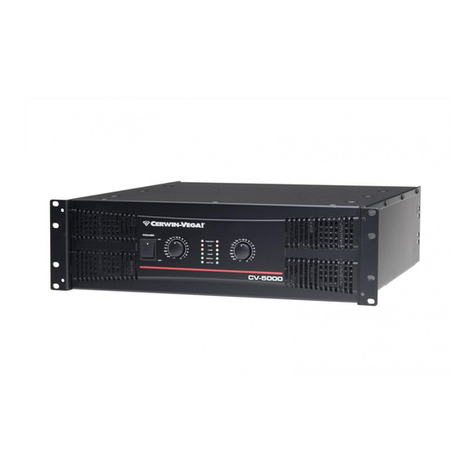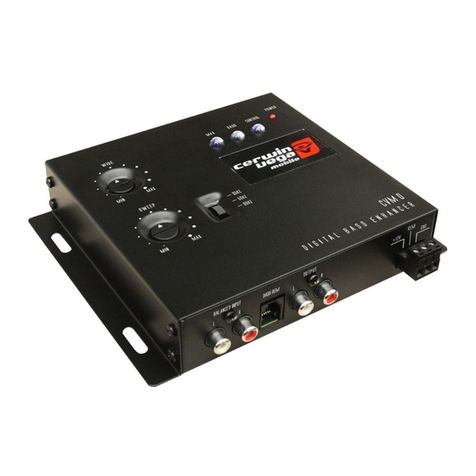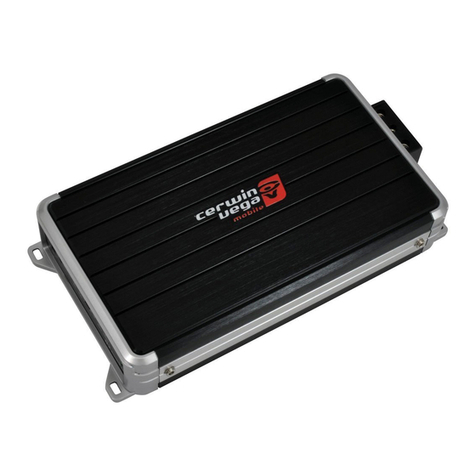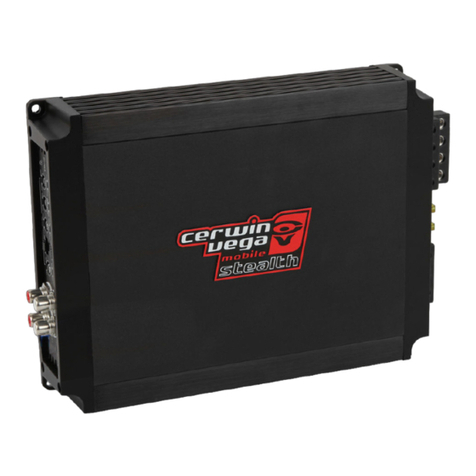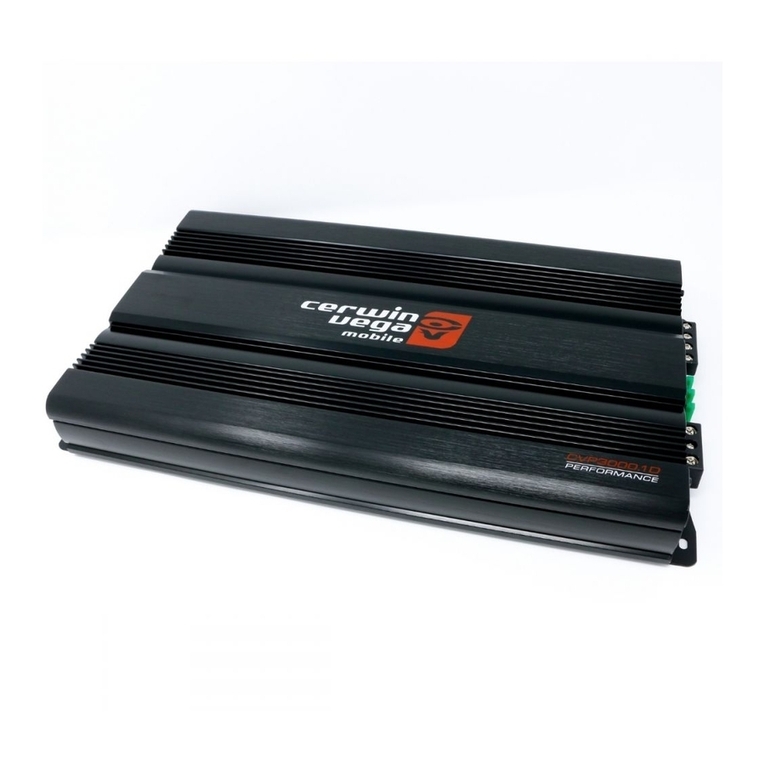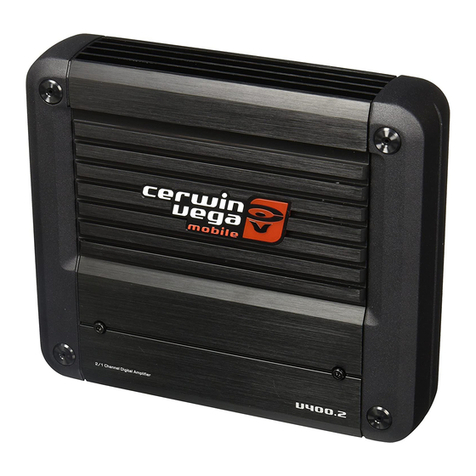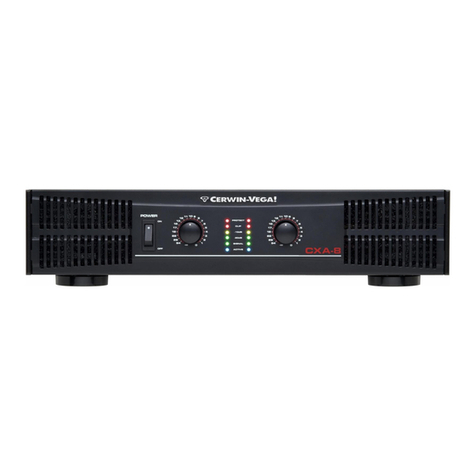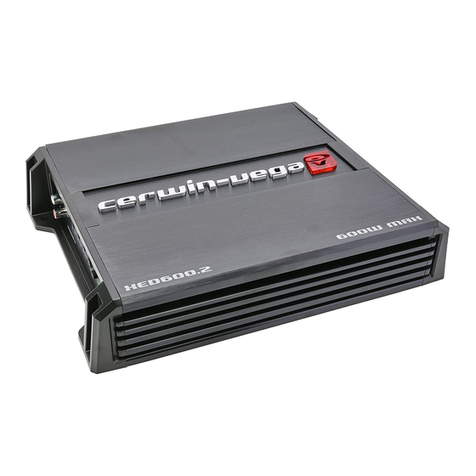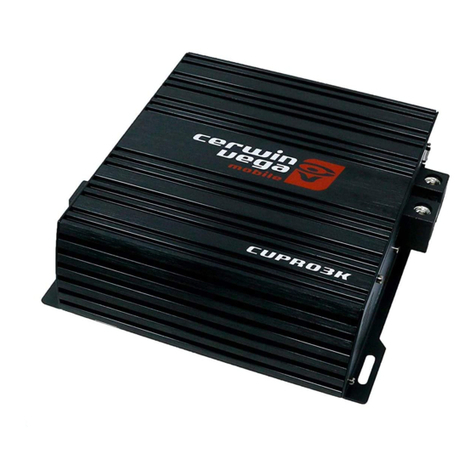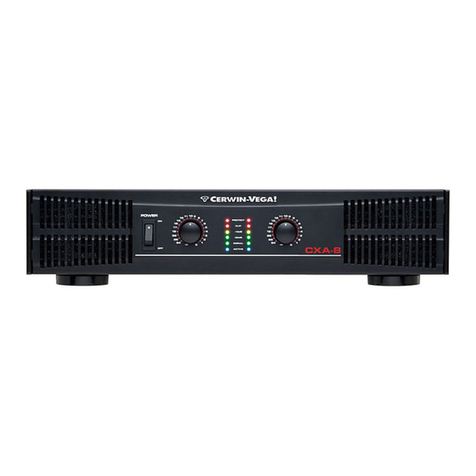
5
Installation
Placing the x-over switch in the FULL position (H71000.2/H7900.4/H71200.5D) sets the amplifier to Full Range. This
setting allows ALL frequencies to pass to the speakers. Placing the switch in the HPF or LPF position activates the crossover.
(LPF only on H71200.1D/71800.1D/72400.1D, and it is always ON).
Placing the switch in the HPF position sets the amplifier to the High Pass Filter mode, enabling frequencies above the cutoff
point to pass. For a Co-axial or Component speaker system begin tuning with the frequency set between 60Hz and 80Hz.
Placing the switch in the LPF position sets the amplifier to the Low Pass Filter mode, enabling frequencies below the cutoff
point to pass. For a subwoofer system begin tuning with the frequency set between 80Hz and 120Hz.
To adjust the gain setting, turn the amplifier gains all the way down (counterclockwise). If using a remote level control
(H71200.1D/71800.1D/72400.1D/71200.5D) plug the remote level control into the amplifier and turn it to about
1/2 way up. Next turn the source unit volume up to almost full volume (usually about 2/3rds of the way up) or until
the output starts to distort on an oscilloscope. This will be NEARLY full volume on most source units, perhaps one or two
“clicks” down from maximum volume. Next, increase the amplifier gain setting until adequate volume is achieved, or
until distortion is audible and then turn it down a bit until the distortion is inaudible.
NOTE:
Ideal signal to noise and dynamic range are achieved with the gain at minimum. Most users find adequate gain and volume
is achieved at less than halfway in the adjustment range. Avoid setting the amplifier gain very high as noise and distortion will
increase significantly. For a more in depth level setting (gain adjustment) procedure AND system designs, visit the CVM website.
The HPF or LPF crossover adjustment can now be fine tuned. If you are using the amplifier in a HPF configuration and would like
the system to be a little bit louder you can increse the HP Filter frequency and reset the “Gain” of the amplifier. Raising the HPF
frequency up too high, however will cause a loss of mid range and bass. If you are using the amplifier in a HPF filter configuration
and you hear voice or vocals coming from your subwoofer system you can turn the LPF Filter frequency down (lower).
After setting the input gain adjustment and crossover, you may choose to add a small amount of “Vega Bass Boost” in the low
frequency region. Remember that the Bass Boost feature will not fix a poorly designed subwoofer enclosure or subwoofers
that didn’t sound good to begin with.
1. Make sure any bass EQ, loudness or low frequency equalization from the source unit is set to OFF or FLAT.
2. While playing the same musical selections used during the gain setting process, slowly increase the level of the Bass Boost.
You should be able to notice a obvious change between 0 and +12dB. If you do not notice much difference, then it will not
serve any benefit to increase the boost further.
3. If the boost has audible benefits without adding appreciable distortion, find a level that suits your taste. Remember: it’s
much easier to construct the right subwoofer enclosure for your listening preferences than relying on a bass boost control to
do the job!
4. VARIABLE PHASE (MonoBlocks): This control helps solve issues with phyiscal placement of the subwoofer in relationship to
you the driver. It is simple to use, have a friend adjust this control while playing music with bass until it sounds the best
and the most forward in the vehicle, WHILE you are in the drivers sit.
5. Prepare the ground wire for attachment to the amplifier by stripping 5/8” of insulation from the end of the wire. Always
use a wire of the same gauge as the power connection, never smaller. Insert the bare wire into the GND terminal and
tighten the set screw to secure the cable in place. Prepare the chassis ground by scraping any paint from the metal surface
and thoroughly clean the area of all dirt and grease. Strip the other end of the wire, crimp and soldier a ring connector.
Fasten the cable to the chassis using a non-anodized screw with a star washer.
WARNING: It is important to upgrade the ground
connection between the negative (-) battery post and the
vehicle body or chassis to achieve optimum electrical
performance.
6. Prepare the REM turn-on wire for attachment to the amplifier
by stripping 5/8 inch (15.9mm) of insulation from the end
of the wire. Insert the bare wire into the REM terminal and
tighten the set screw to secure the wire in place. Connect the
other end of the REM wire to a switched 12 volt positive
source. The switched voltage is usually taken from the
source unit’s remote amp turn on lead. If the source unit
does not have this output available, the recommended
solution is to wire to an accessory terminal in the car’s fuse
block using a relay to isolate the amplifer from the vehicles
accessory circuit. This however will turn the amplifier on and
off with the ignition key, regardless of whether the car stereo
is on or off.
7. Securely mount the amplifier to the vehicle or amp rack. Be careful not to mount the amplifier on cardboard or plastic
panels. Doing so may enable the screws to pull out from the panel due to road vibration or sudden vehicle stops.
8. Connect from source signal by connecting the RCA audio cables (or speaker wires) to the input jacks at the amplifier.
FUSE CONNECTION DIAGRAM
9. Connect the car speakers. Speakers impedance should NEVER be less than 2 Ohms stereo, 4 Ohms bridged(the mono block’s
are stable into 1 ohms). For most applications 18 gauge wire is adequate for the speaker leads. For leads in excess of ten
feet, 16 gauge wire is recommended. Strip the speaker wires 1/2” (12.7mm) and insert into the speaker terminal block,
then tighten the set screw to secure into place. When wiring the speakers, pay careful attention to the polarity of the
terminals on the speakers and make certain they correspond to the polarity on the amplifier. DO NOT chassis ground any
of the speaker leads as unstable operation or damage to the amplifier and/or speaker may result.
RCA CONNECTION DIAGRAM
H71000.2 = 20A
H7900.4 = 30A
H71200.1D = 2X25A
H71800.1D = 2X35A
H72400.1D = 2X40A
H71200.5D = 2X25A
SPEAKER LEVEL INPUT (OPTIONAL)
* FUSES SHOULD BE EQUAL TO 1/2
OF FULL POWER CURRENT DRAW
Connect your OEM Headunit speaker
wiring directly into any of the NEW
H7 series amplifers with no additional
parts or adaptors. Just use the
HI-INPUT connector (except the
1200.5D use RCA for HI-INPUT)
FUSE
FUSE

